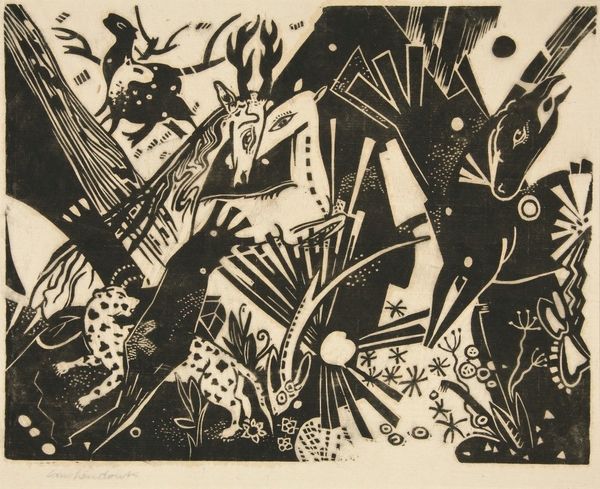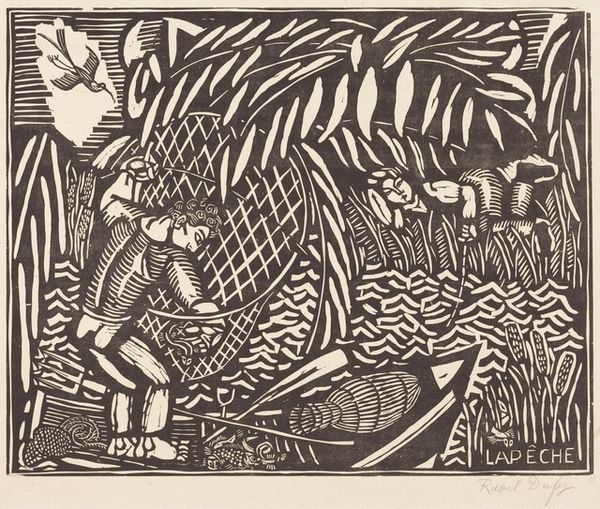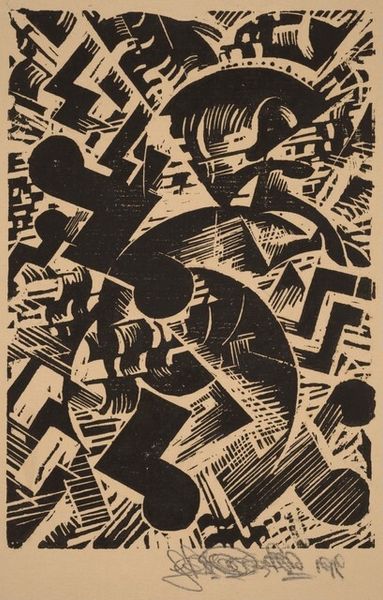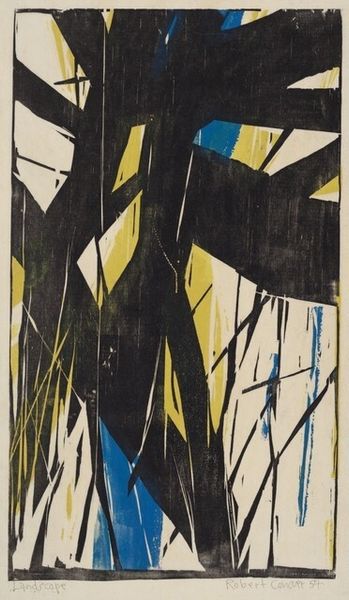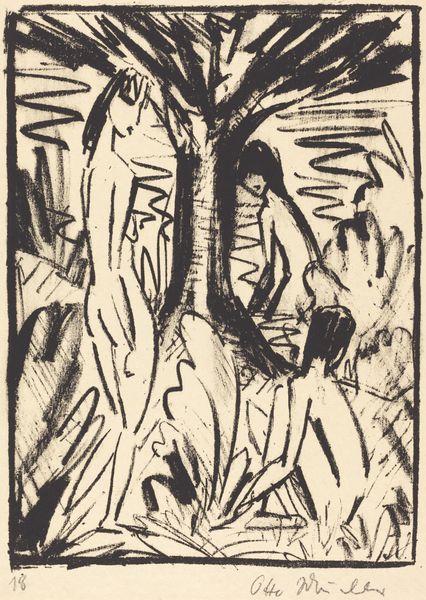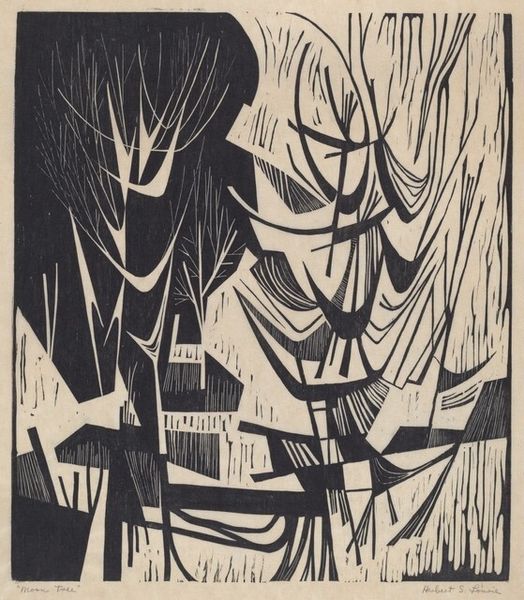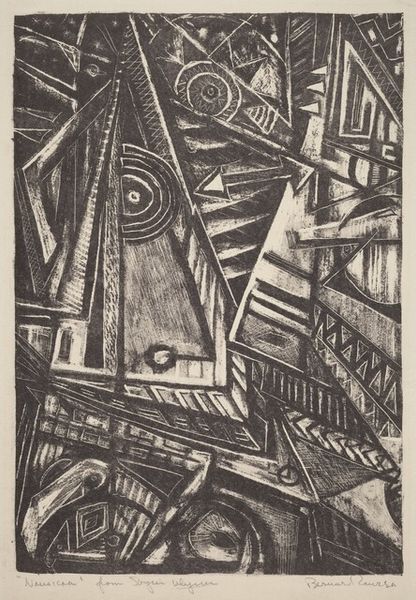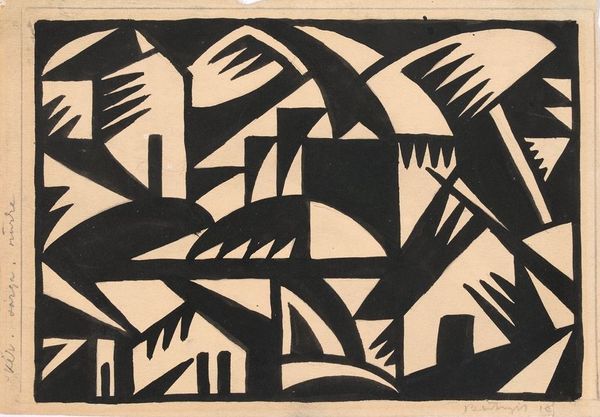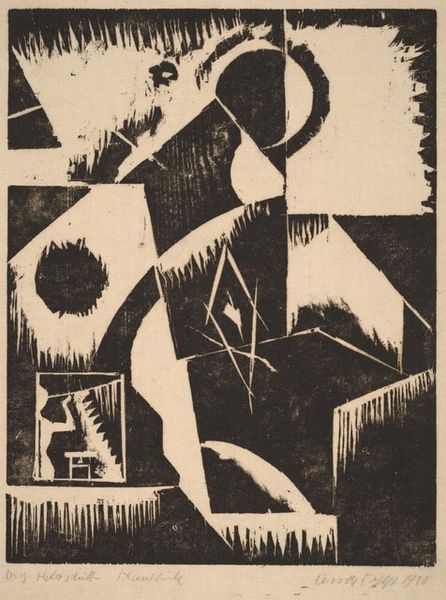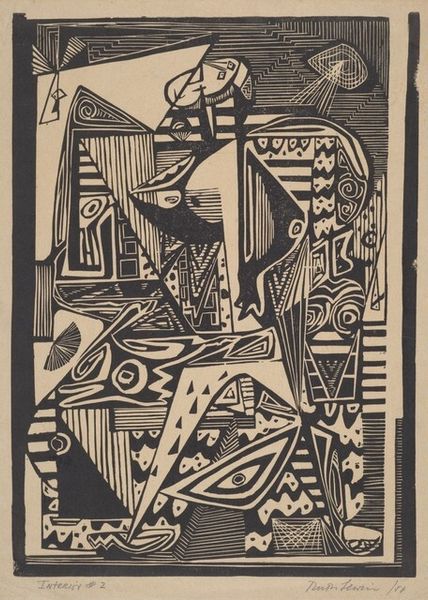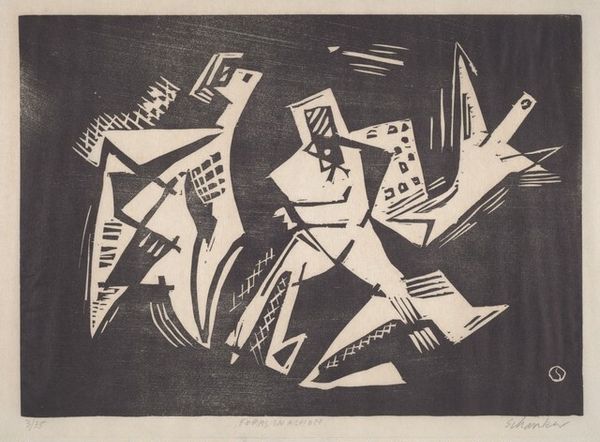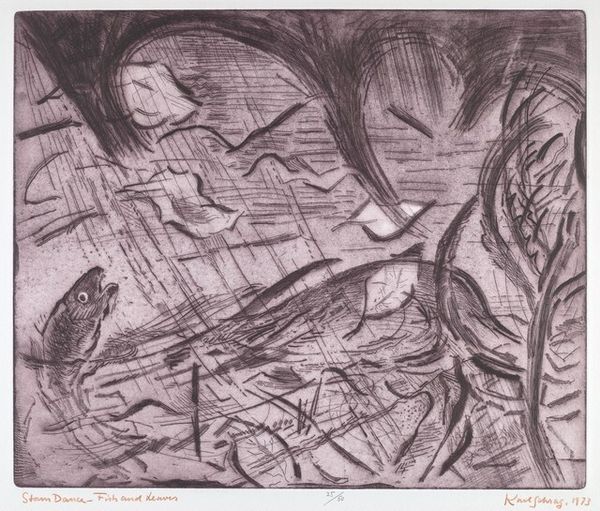
Copyright: National Gallery of Art: CC0 1.0
Werner Drewes made this abstract woodcut, "Dream in the Grass," sometime in the 20th century. The image presents a dynamic interplay of geometric and organic forms. It seems to invite us to consider the relationship between the natural world and the human impulse to abstraction. Drewes was closely associated with the Bauhaus School, a revolutionary German art school that sought to unify art, craft, and technology. The school played a crucial role in shaping modern art and design, influencing architecture, furniture, and typography. It was progressive and believed that art should be integrated into everyday life and accessible to all. Note the flat planes and geometric arrangement of forms that reflect the Bauhaus’ utopian aim to create functional and beautiful designs for a modern, industrial age. The bold use of black and white to create depth and movement also shows us its aesthetic. By exploring the archives of institutions like the Bauhaus, we can discover how artists like Drewes were able to challenge existing social norms, and redefine the public role of art.
Comments
No comments
Be the first to comment and join the conversation on the ultimate creative platform.
